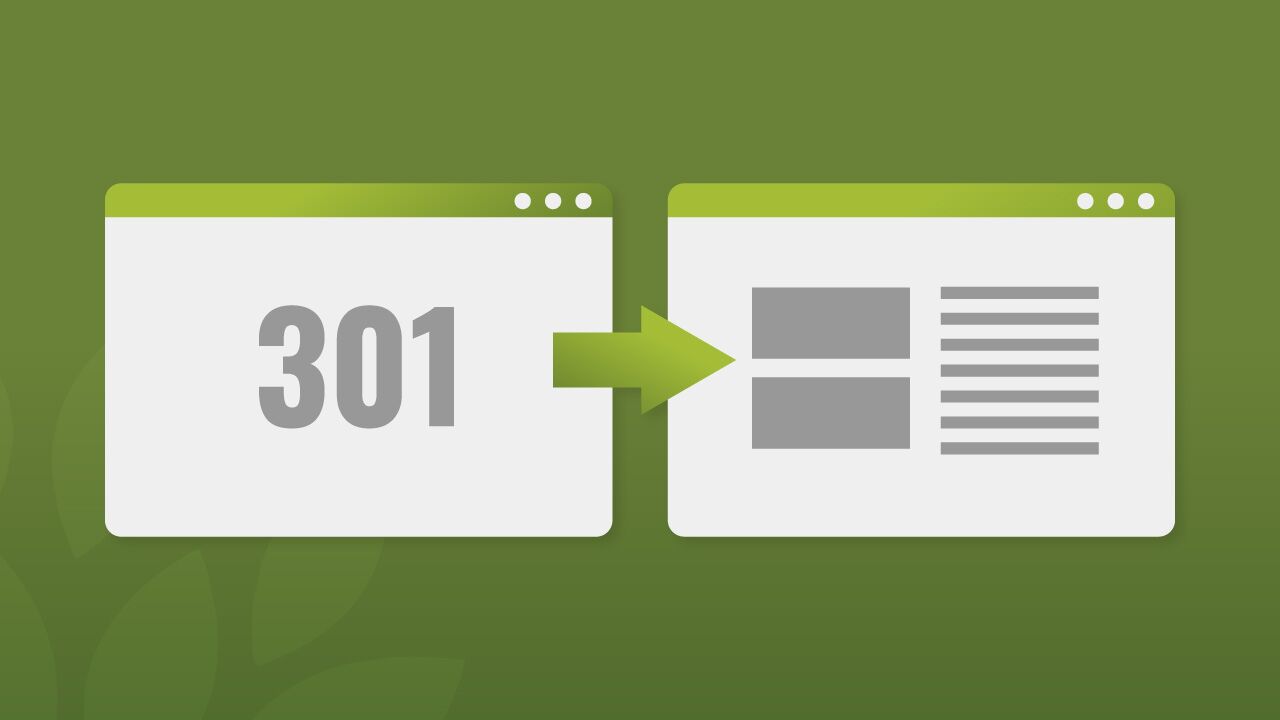301 redirects are an easy way to redirect one webpage to another without significantly impacting your SEO rankings. You can also effectively use 301 redirects to drive organic traffic by consolidating content and optimizing your website. This article will explain what 301 redirects are, how they affect your SEO, and problems to avoid.
301 Redirects Explained
Basically, a 301 redirect enables you to make changes to your website’s URLs without hurting your rankings or your usability. A 301 redirect is an HTTP status code. It indicates that a page has permanently moved location. A 301 redirect informs the browser that the page is using a new URL and that it won’t be returning to its original location. For example, you could use a 301 redirect to move traffic attempting to visit store.mycompany.com to now visit mycompany.com/store.
For this reason, a 301 redirect is not an appropriate HTTP status code for a temporary redirect. A 302 redirect indicates that a page has moved temporarily. Using a 302 redirect will not hurt your rankings. However, it will also not result in the original page being deindexed which is often a goal of a 301. If you’re ready to wipe that old page from the record, use a 301. Which leads us to…
Why use a 301 redirect?
There are a number of reasons to utilize 301 http status codes to redirect traffic. Here are 4 common reasons to consider using a 301:
1) Often 301 redirects can be used to effectively turn two or more webpages into a single document that will more successfully build rankings and authority. For example, if you have two pages on your website that are basically the same content, it could be considered duplicate or even thin content. In this example, you might want to consolidate these pages into one main version, by adding a 301 redirect from one version to the other. Using 301 redirect will effectively reroute that traffic and SEO value, without a penalty to your rankings.
2) 301 redirects can ensure website usability. If you’ve recently reworked your website, optimized your navigation, condensed content, or shifted to a new design, use 301 redirects to maintain usability. You will drive users away if you fail to streamline your navigation during a website overhaul. Redirects are a painless method to guarantee your users won’t suffer. 301 redirects are also a useful tool for removing and deindexing old webpages.
3) If you’re set up with HTTPS:// via an SSL certificate, you need to make sure that you add 301 redirects from all of your http:// URLs to the new https:// URLs. Google rewards sites that consistently employ web encryption. 301 redirects are an effective way to ensure all the pages on your site are redirecting to HTTPS.
4) A 301 redirect is also a great strategy if you’ve changed your URL or domain. Perhaps you’ve decided to branch into an international market and shift to subdomains organized by country. Perhaps you’ve recently learned that keywords in URLs can benefit your SEO. Whatever the reason you’ve decided to change your domain or URLs, 301 redirects are a great way to ensure that your users and your page rankings aren’t negatively affected.
Problems to Avoid
It is possible to make mistakes when implementing 301 redirects. Here are 5 problems to avoid:
1) Rather than only relying on 301 redirects after changing your URLs or domain, it’s extremely important that you remove the old webpage URLs from your internal linking and sitemaps. Continuing to require Google to crawl webpages that no longer exist will waste your crawl budget. Be sure to fix your internal linking and sitemaps to ensure that users and crawlers land on the new pages and are not forced through too many redirect chains. A “redirect chain” sends users and robots through a series of pages before arriving where intended.
2) Avoid redirect loops. A “redirect loop” sends crawlers and users on a never-ending loop through old and new pages when your redirects are not set up correctly. These create a significant usability issue and will cause confuse Google’s crawlers.
3) Make sure your new page exists. If you accidentally point a 301 to redirect to a page doesn’t exist, you’ll lose users and crawlers. This will return a 4xx or 5xx HTTP response code.
4) After using a 301 redirect for a six month period, check to make sure that Google isn’t still sending traffic to your old pages. If users are still attempting to visit the old page address, then you have internal or internal links that need to be fixed.
5) Using 301 redirects to send users to completely different pages can incur Google penalties. When choosing a page to redirect to, make sure you’re selecting a page that is as relevant and similar to the page you’re redirecting as possible. For example, don’t simply point all of your 301 redirects to your homepage, take the time to find what the most relevant page is for each URL you’re redirecting.
At first, 301 redirects might sound daunting and highly technical. In reality, they’re neither. They’re an amazing tool for boosting traffic and website usability. As always, it’s extremely important that you monitor the results of your work, as well as double check your redirects are correct immediately after implementing them!

